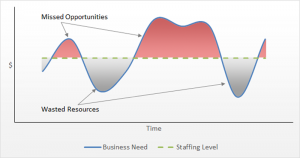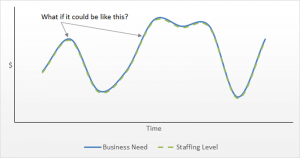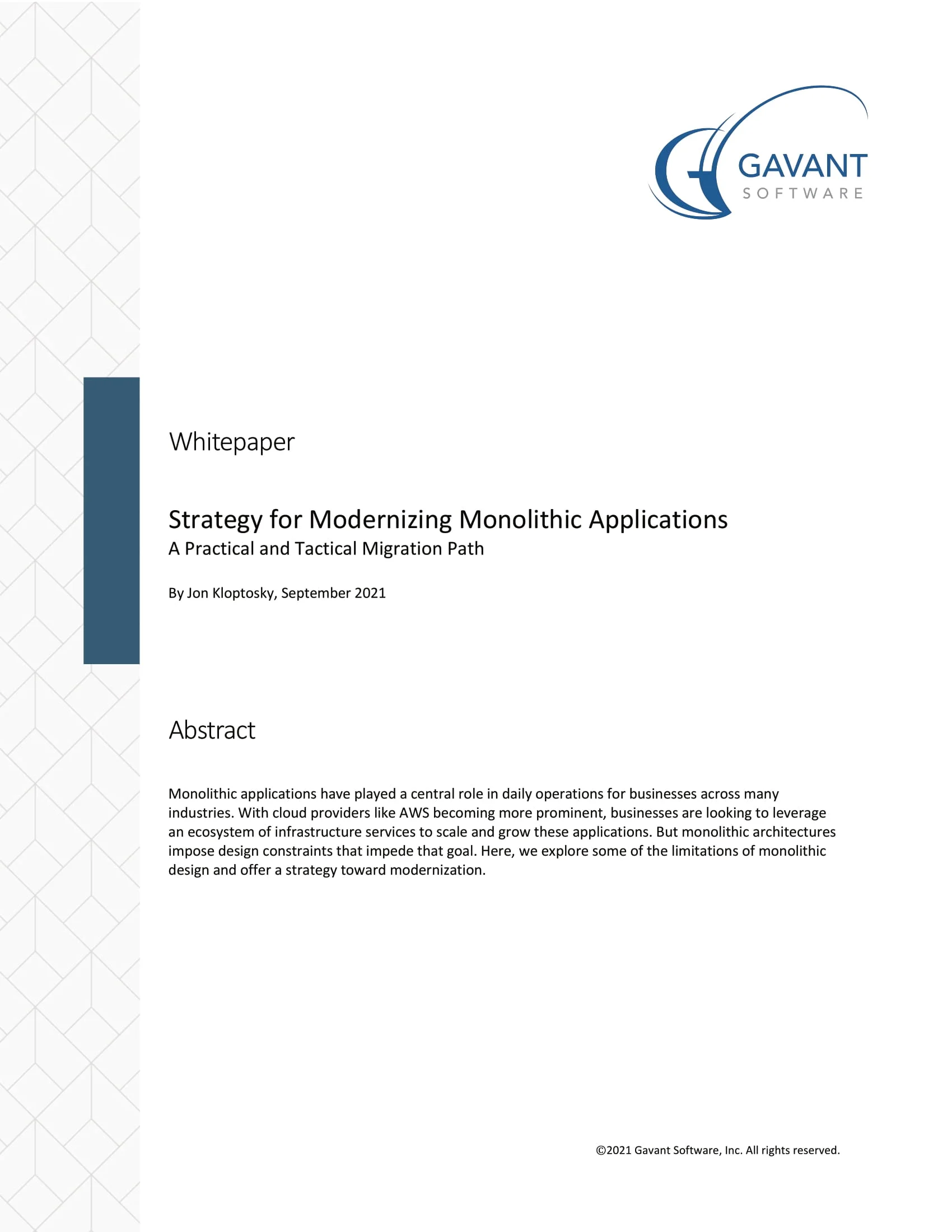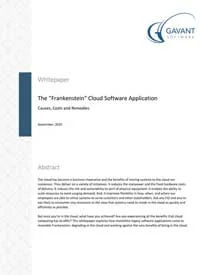Reconnect Software Development Cost with the P&L
Executive’s Primer on Software Development as a Service
Businesses need to balance the forces of supply and demand for products in order to satisfy customers reliably and profitably. Harmony is achieved when the two forces attain equilibrium. Innovative businesses leverage computer systems and develop applications seeking to differentiate from competitors, by offering a better customer experience for revenue generation, or internally for more efficient operations. Applying technology solutions in business requires a similar focus to keep supply (development team capacity) and demand (business needs) in harmony.

Figure A tells a familiar story about the relationship between business needs and software development capacity. It’s often like “feast or famine.” Many organizations respond to this volatility by adding managers to buffer with the business, just like shock absorbers. They understand the business needs and rationalize an “optimal” staffing level. But there is still a high likelihood of friction between development capacity and business needs. The green line drawn too low results in delayed projects and missed opportunities to boost revenue or reduce cost. The green line drawn too high increases capacity, but also increases the fixed overhead costs of staffing.

A typical response is “horse trading” of projects and priorities among the various parts of the business. This contributes to friction between business units since some needs are met while others not. An understaffed team may only be able to tackle the highest priority, most pressing tasks, choosing maintenance duties over revenue creating opportunities. Worse, a business’ expectations of what is possible may be artificially lowered in effort to satisfy its needs, as what can or cannot be achieved is determined by staffing levels instead of ROI. The result is focus on simpler projects with smaller ROI.
How do organizations balance supply and demand for resources like these? One rule of thumb is to outsource 35% of IT development capacity, enabling some ability to scale to meet demand while controlling cost during non-peak times. This is a step in the right direction. But letting go of a temporary contractor often means never being able to hire him or her again. This hurts more if they have performed well because their special tribal knowledge and positive attributes leave with them. Retaining those attributes and tribal knowledge means keeping contractors. They become a hedge against future demand; however the focus on the P&L and expense management goes back out the window.
What if it was possible to have your software development supply and demand in balance and your organization’s needs met, without the friction, excess cost, quality tradeoff and disconnect from the P&L? That vision can be represented by Figure B.
Because the focus is on Delivering Value, Software Development as a Service provides the flexibility to mirror business needs with the right staffing level, whether providing some or all of your development and support resources. When activity is low, the savings flow to the P&L immediately. IT development cost can be scaled down to Zero and held there. When activity is high, you‘re assured to have the optimal team to greet the challenge.
Consistent staffing makes Gavant’s team look and behave like an extension of yours. In every function, wherever possible, tribal knowledge is not lost between tasks and projects. Your organization receives the right caliber IT development and support from strategy to measurable results.




 Strategy for Modernizing Monolithic Applications
Strategy for Modernizing Monolithic Applications
 The "Frankenstein" Cloud Software Application
The "Frankenstein" Cloud Software Application
 A Guide to Custom Software Development
A Guide to Custom Software Development